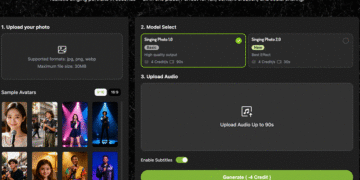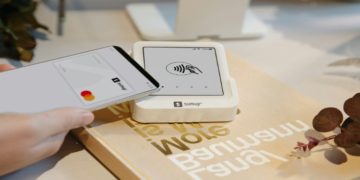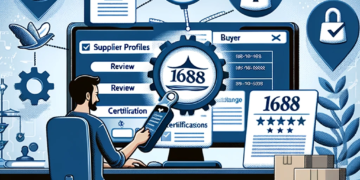Today’s world is becoming increasingly remote due to many factors, including technological advancements and the need to maintain a good work-life balance. The COVID-19 pandemic gave remote working greater weight, significantly altering the work environment.
These changes served to increase the global need for ideal, reliable, and budget-friendly communication solutions. Thankfully, the introduction of eSIMs brought the much-needed break for remote workers, travellers, and anyone who wants to use multiple phone numbers with a single device.
The superb technology is not only convenient, flexible, and secure, but cost-effective, too. This article explores how eSIMs have reformed remote working.
Shift from office to world office: staying connected everywhere
Increased flexibility and international presence are vital ingredients to successful business operations in today’s world, which necessitates the need to stay connected globally in real-time. To this end, eSIM technology has become a powerful tool that offers easy, expandable, and cost effective connectivity that has facilitated the global shift from office to world office, as opposed to the typical physical SIM cards.
If you want eSIM for the Philippines, Canada, UK, or any other part of the world, the superb technology helps to keep your employees connected. This not only makes it easy to communicate and perform work duties, but also provides the company with a cost-effective way to grow its international presence.
The use of eSIM technology for businesses is beneficial in the following ways:
- Enables global communication without the need to pay the costly international roaming charges
- Allows you to manage remote teams with a single device easily
- It provides a backup system for uninterrupted business activities by multiple teams
- Makes it easy and fast to deploy new mobile employees or offices
Without a doubt, eSIM is revolutionizing business communication in today’s digital world.
Multiple profiles on one device: switch networks per country
One thing you’d love when using eSIM is its ability to support multiple profiles on one device, a feature that allows you to juggle between work and personal life while traveling.
The number of profiles to use will depend on your device, with iPhones and Android devices allowing up to 8 and 7 profiles, respectively. The technology allows the activation of only 2 profiles at any one time.
Below are some of the benefits of having multiple eSIM profiles;
- Allows you to access the data rates of various global destinations, thereby eliminating the need to pay for costly international roaming fees
- It allows you to separate your work and personal life by using different profiles when making calls or sending messages.
- It allows you to use the most suitable and cost-effective data plan based on your needs, e.g., using one profile for calls and another for browsing.
- It allows you to use a stronger signal by testing the speed and coverage of different networks.
Switching between different eSIM profiles does not disable your primary profile.
Reliable hotspots abroad: eSIM‑powered Wi‑Fi on the go
There’s no doubt about the importance of having a good internet connection if you work remotely, especially if you are a constant traveler. It’s true, you may have access to Wi-Fi in many public places you visit, be it at the airport, restaurant, or hotel, but Wi-Fi may not be a reliable source of internet for your work needs.
You might not just have interrupted Zoom calls, but miss out on important video calls and fail to meet work deadlines, thanks to a poor internet connection.
The many eSIM data plans eliminates the need to rely on Wi-Fi networks or having to pay for the costly international roaming charges. That notwithstanding,, you can still use Wi-Fi without having to disable eSIM from your device, and still be able to use your device to make calls or send text messages.
Budget planning with data bundles: no surprise charges
Effective eSIM budget planning will enable you to control data costs and avoid surprise charges. To do this, you’ll need to:
- Plan in advance: Conduct a thorough research on the data plans offered by different eSIM providers before you travel. Important things to consider include their pricing, areas covered, and other vital inclusions. Comparing the different plans will enable you to choose one that best fits your specific needs. Consider buying your ideal data plan before your trip to avoid paying for potential price hikes.
- Data and cost management: To save on data costs, use the available apps provided by the eSIM providers to monitor your data usage in real-time. Similarly, you can enable device notifications to let you know when you have reached certain data limits, as well as disable non-essential apps. If you have access to Wi-Fi, use it to reduce eSIM data wastage.
- Choose flexible plans: When traveling to many locations for short periods, it’s best that you buy short-term plans only when you need them. In this case, a regional or global plan will suit you well. Be on the lookout for hidden fees, such as activation fees, that will add up to your data costs.
- Leverage discounts and promotions: Many eSIM providers have occasional promotions that include special offers for new customers. Take advantage of these to lower your data costs.
Setup tips for digital nomads: ease and predictability
It’s super easy and fast to set up eSIM on your device. It involves:
- Device compatibility: You need to check if your device is eSIM compatible. Thankfully, many new devices, both iPhone and Android, allow eSIM use. In case of any doubts, the device’s online specification or the manufacturer’s handbook will help you.
- Choose a provider: There are several eSIM providers globally with varied data plans. Do a quick comparison on prices, flexibility, and areas covered by different providers and choose one that best suits you.
Buy and install an eSIM: After you have chosen your preferred provider and purchased an eSIM card, you’ll receive a QR code that you’ll use for installation. To do this, you’ll have to go to the cellular settings on your device, select the ‘add cellular plan’ option, and scan the QR code to complete the installation process. You’ll then have to activate the eSIM through email or a message sent by the provider.
David Prior
David Prior is the editor of Today News, responsible for the overall editorial strategy. He is an NCTJ-qualified journalist with over 20 years’ experience, and is also editor of the award-winning hyperlocal news title Altrincham Today. His LinkedIn profile is here.












































































